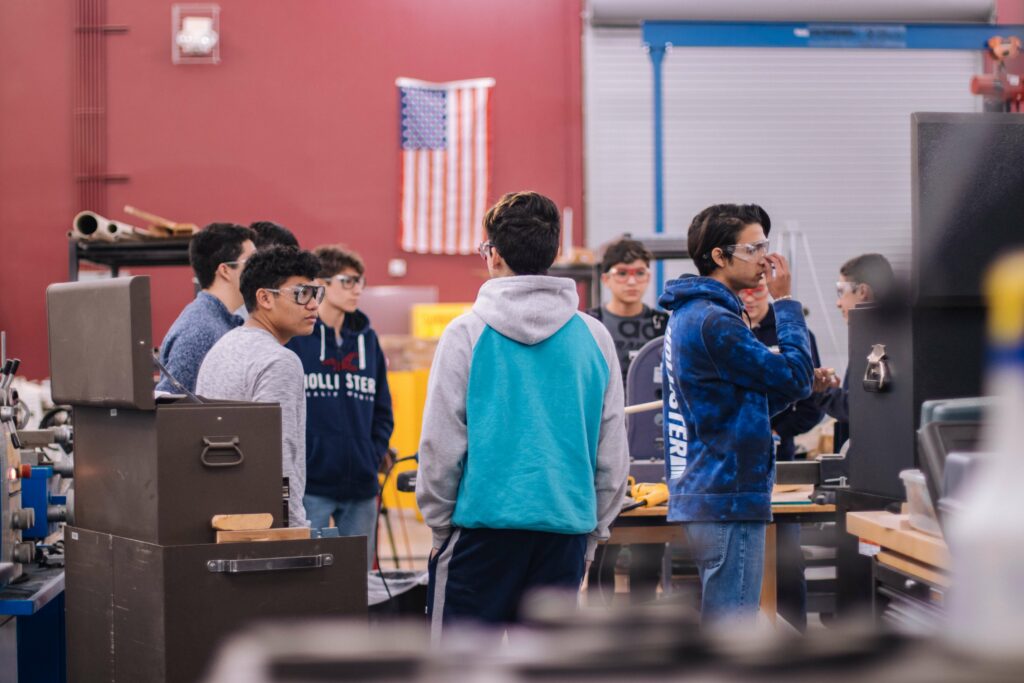Don’t underestimate the benefits of classroom air purification – especially when cold and flu germs are making the rounds.
Classroom air purification is a hot topic. Especially since schools returned to in-person learning after the initial distance learning days of the pandemic, classroom air quality has been a common consideration for school districts.
What many of us know, though, whether we have kids in school or work in schools, is that air quality is a huge factor in the health and wellness of everyone in school buildings. How often do we talk about schools being “germ factories?” And you’ve probably heard of Sick Building Syndrome, which isn’t specific to schools, but does point to the seriousness of indoor air quality.
However, there’s a catch for those in the janitorial and building services industries. You aren’t designing classrooms. You don’t have the ability to renovate buildings and update HVAC systems. And while some classrooms may have air purifiers, it’s likely that many of them don’t. You are, in some ways, fighting an uphill battle here.
Still, there’s so much you can do to help minimize the spread of colds, flu, and other sicknesses. And the work you do comes with innumerable additional benefits.
Keep up with school cleaning checklists, inspections, and more. Learn more today with a discovery call and find out how to make your cleaning operation more efficient, cost effective, and safer for everyone!

Classroom air purification: A quick review of what to do
Before we jump into the benefits of classroom air purification, here’s a quick look at some of the steps you can take to help the process along. Of course, not all of these are possible, but use what you can. Anything you can do to improve air quality is a win.
Open windows. This is, perhaps, the best and most challenging way to improve the air quality in almost any building. Fresh air moves germs, dust, and other allergens out of a space as they get picked up on moving currents. The problem, of course, is that it’s not always safe to open windows. Plus, it’s hard to justify opening windows when temperatures are in the single digits and lower. Still, if you can manage this, it’s a great way to improve the air quality.
Use green cleaning products. Green cleaning products contain fewer irritants, are better for the environment, and are already required in many school districts. These products are just as effective at killing bacteria and viruses, yet minimize the occurrence of chemicals that can trigger asthma symptoms and other health conditions.
Stay on top of HVAC cleaning. You know how dirty and dusty the HVAC filters get. And because of that, you probably change them regularly. But even the best filters can let some dust and airborne particles through. Over time, these particles build up and start to blow around the building, thanks to the heating system. If you’re able, a thorough HVAC system cleaning before flu season can help limit the spread of germs.
Those are some of the steps you can take to increase classroom air purification. Now, just to show how much your efforts help, here are some of the benefits that come as a result of your work.
The 5 benefits of clean air in classrooms
1. Better classroom behavior. If you’ve ever had a headache or sore throat and still had to go to work, you know it’s hard to be at your best. When we don’t feel good, we get cranky and short-tempered. Classroom air purification strategies can limit the allergens that cause these headaches and other symptoms. While this may not lead to a room full of perfectly behaved students, it certainly will help.
2. Fewer teacher sick days. Students can potentially miss a lot of instruction time when their teacher is out sick. With cleaner classroom air, and less flu virus in the room, teachers can improve their chances of staying healthy. And that leads to more instruction time.
3. Happier students. This one is simple. When you feel good, you’re happier. When you come to school sick, you feel miserable. And you stand a good chance of passing the flu on to other students and teachers. So, cleaner air leads to fewer cases of the flu, which leads to happier students.
4. Improved student performance. A report published by Johns Hopkins University in 2021 points to “statistically significant improvements in student performance” in rooms with either better ventilation or lower levels of carbon dioxide. Cleaning won’t alter the levels of carbon dioxide, but it’s not hard to extrapolate the basic message here: classroom air purification efforts, whether through better ventilation or appropriate cleaning strategies, are good for students.
5. Reduction in cold symptoms. We can’t forget that flu season is also cold season. So, to dig down into the health benefits, we can look at actual numbers. In a report funded in part by the U.S. Green Building Council, researchers point to “pollutant source controls” as leading to an 85% reduction in colds.
Make health and wellness the core of your school janitorial strategy. Schedule a free call with Janitorial Manager to learn how mobile-friendly janitorial software can help your team improve conditions for everyone.

